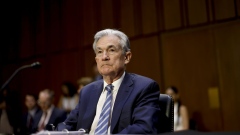Feb 19, 2021
Mark Wiseman: The world could learn from Canada's pension model
'Have to continue to protect that nest egg': AIMCo chair on Canadian pension model and the economy
Chief among the many challenges brought on by COVID-19 is the acceleration of the global pension crisis. Low interest rates and decreased economic activity are ballooning pension liabilities and challenging return assumptions, ultimately stressing pension plans all over the world.
To illustrate this, look no further than America’s largest public pension plan. CalPERS, the pension plan responsible for providing retirement benefits for millions of Californians, is less than 72 per cent funded according to current estimates.1 The pension situation in much of Europe and Asia is, at best, in a similar position.
Canadians are not insulated from this concerning trend. According to research from the Healthcare of Ontario Pension Plan, almost three quarters of Canadians agree that there is an emerging retirement income crisis.2 Canadians are concerned about how the global pandemic will affect their ability to retire comfortably. Thankfully, Canadian pensions are well managed and safe. But, in times of crisis, the risk that governments make unwise decisions increases substantially.
Canada has world-class pension plans, and to ensure the continued security of Canadian’s pensions, it is vitally important that these plans continue to operate with the independence and strong corporate governance structures that have been in place at these institutions for decades.
Following the 2008 financial crisis, Ireland raided its national pension plan for up to 17.5-billion euros, as part of a deal with the European Union to bail out its banks.3 This was not long after Argentina nationalized nearly $30 billion in private pensions, as a result of the financial meltdown in that country. A study conducted by the Argentinean Ombudsman's Office in 2019 found that approximately 70 per cent of pensioners in Argentina were unable to afford basic needs,4 demonstrating the dire situations citizens are left in when governments do not respect the independence of pension plans.
Importantly, independence from governments alone is not enough to ensure the success of pension plans. These plans also require rigorous corporate governance structures that are akin to a publicly-traded company. In fact, poor corporate governance is the primary cause of CalPERS’ recent struggles.
First, CalPERS’s board is highly politicized. Its former chief investment officer abruptly resigned in August after compliance staff noticed that he had personal stakes in some of the investment firms that CalPERS invested in. However, many observers see this forced exit as being driven by the board’s politics. To make matters worse, the board has been painstakingly slow in finding a permanent replacement, in no small measure because many qualified candidates do not want to work under a politicized board.
Even more problematic is the fund’s inability to invest in private equity, an asset class that has become a vital part of achieving target returns for pension funds. Data show that CalPERS’s private equity allocations and returns are consistently lower than industry benchmarks, largely because its board members have gotten in the way of management in making key investment decisions.5 The board should oversee strategy and risk management, but it should not be involved in the day-to-day investment decisions of the plan.
The Ontario Teachers’ Pension Plan (OTPP) is what a pension plan with both independence and rigorous corporate governance structures looks like.
Thanks to the brilliant foresight of former Chief Executive Officer Claude Lamoureux, OTPP is held accountable to the government, but not controlled by them. The plan sponsors - the Ontario Teachers’ Federation and the Ontario Ministry of Education - are equally responsible for ensuring the plan has good corporate governance and enough money to meet its long-term pension obligations. Board members are required to act independently of both the plan sponsors and management, and to make decisions in the best interests of all plan beneficiaries.
All these factors allow OTPP to consistently meet and exceed target returns. The same can be said for most public pension plans across Canada, including the Canada Pension Plan Investment Board (CPPIB) and the Caisse de dépôt et placement du Québec (CDPQ), which respectively manage the assets of the CPP and QPP, helping to ensure the retirement security of virtually every Canadian worker.
Canadian governments have, to date, understood that the money in these plans is not theirs to invest or spend, rather it belongs to Canadian beneficiaries and should be managed in a way that safely maximizes the risk adjusted returns for those beneficiaries.
There is no safer place in the world to have your pension than in Canada. The Canadian pension plan model has shown that with exemplary corporate governance and principled independence, pension plans can help ensure that a country’s citizens have a retirement egg to fall back on, even during these trying times.
Mark Wiseman is a veteran Canadian investment manager who currently serves as chair of Alberta Investment Management Corporation (AIMCo). He previously acted as global head of active equities at BlackRock Inc.; before that, he was chief executive officer of the Canadian Pension Plan Investment Board (CPPIB).





